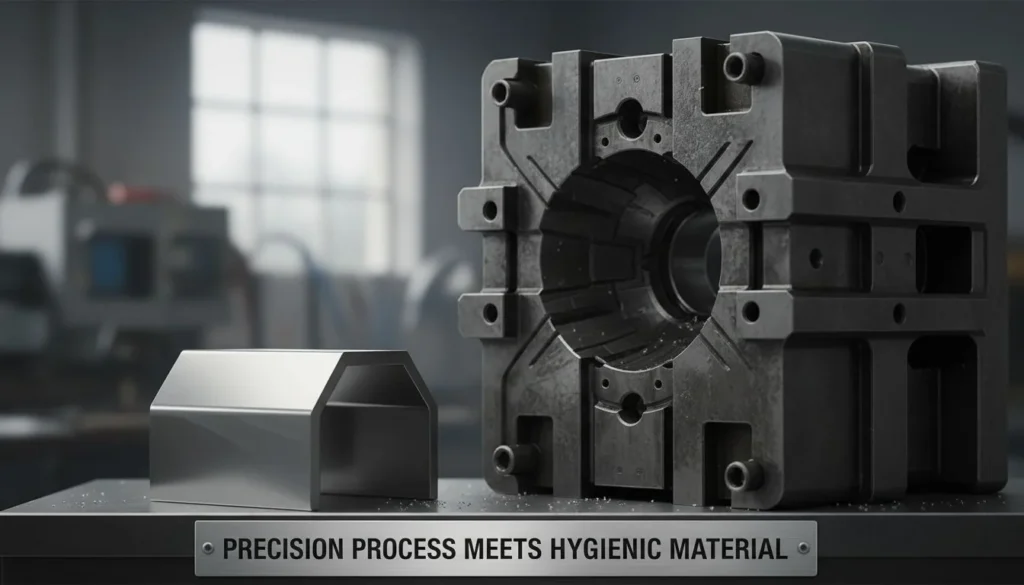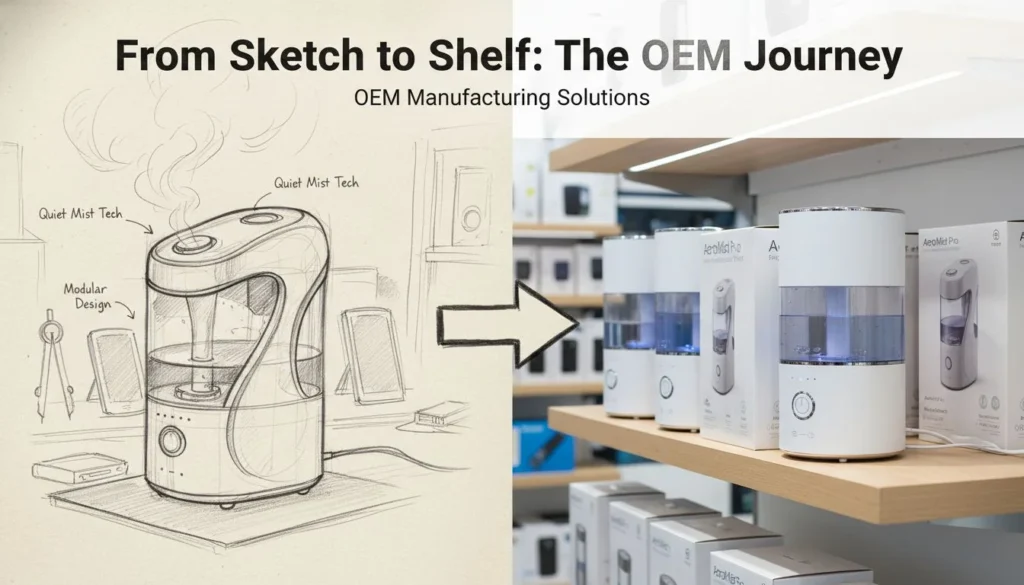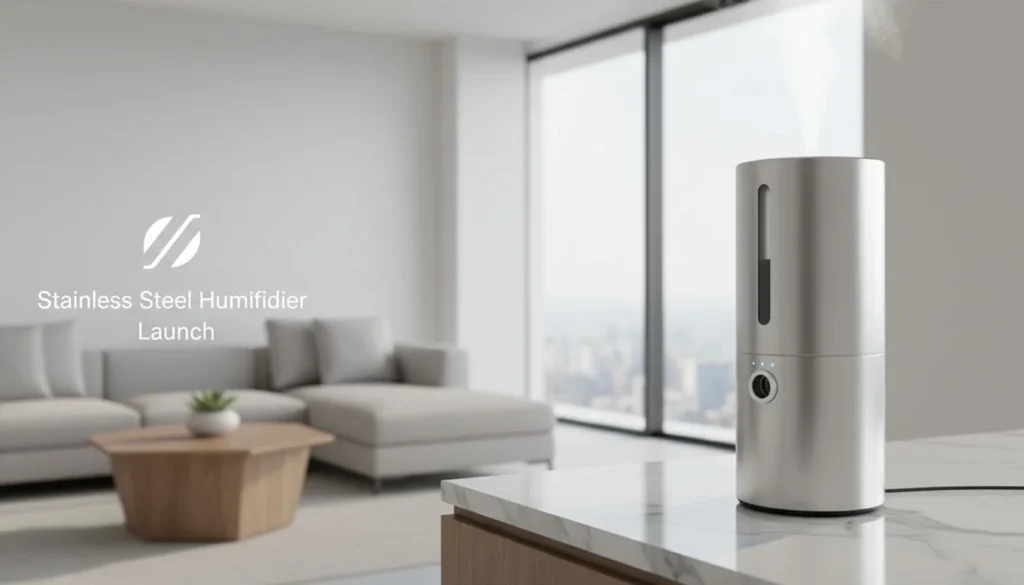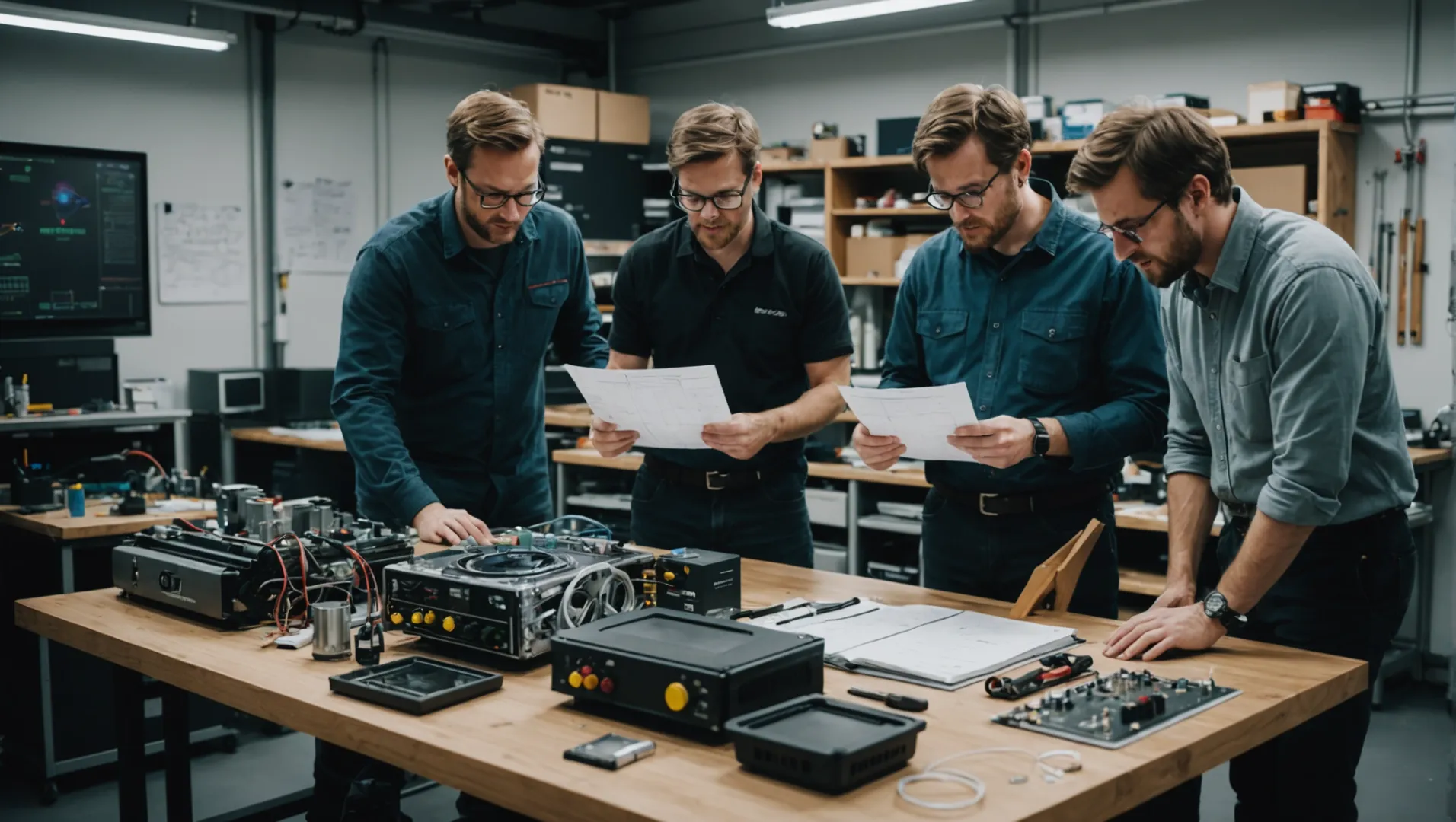
في العالم التنافسي لتطوير أجهزة تنقية الهواء، ينطوي إنشاء منتج ناجح على أكثر من مجرد فكرة رائعة.
تعتبر النماذج الأولية ضرورية في تطوير أجهزة تنقية الهواء لأنها تساعد في اختبار مقاييس الأداء مثل CADRوتدفق الهواء والحجم ومستويات الضوضاء. كما أنها توفر ملاحظات قيمة للسوق، وتساعد في إدارة التكاليف، وتساعد في تقييم قدرات الموردين.
في حين أن النماذج الأولية تقدم رؤى فورية حول الأداء والتصميم، إلا أن تأثيرها يتجاوز المجال التقني. يمكن أن يؤدي فهم الآثار الأوسع نطاقًا لاختبار النماذج الأولية إلى تعزيز ابتكار المنتج وجاهزيته للسوق بشكل كبير. دعونا نتعمق أكثر في كيفية تشكيل النماذج الأولية لكل جانب من جوانب تطوير أجهزة تنقية الهواء.
تساعد النماذج الأولية في تقليل تكاليف تطوير أجهزة تنقية الهواء.صحيح
تحدد النماذج الأولية فرص توفير التكاليف من خلال تحسين التصميمات في وقت مبكر، مما يقلل من نفقات الإنتاج.
ما هي مقاييس الأداء الرئيسية التي يتم تقييمها في النماذج الأولية لجهاز تنقية الهواء؟
يعد اختبار النماذج الأولية أمرًا بالغ الأهمية في ضمان تلبية أجهزة تنقية الهواء لمعايير الأداء العالية.
تتضمن مقاييس الأداء الرئيسية في نماذج أجهزة تنقية الهواء ما يلي CADRوتدفق الهواء والحجم ومستويات الضوضاء. يضمن تقييمها كفاءة الجهاز وفعاليته وجاهزيته للسوق.

معدل توصيل الهواء النظيف (CADR)
CADR هو مقياس أساسي يشير إلى حجم الهواء النظيف الذي يمكن لجهاز تنقية الهواء توفيره في الدقيقة الواحدة. وهو يقيس قدرة الجهاز على تصفية الدخان وحبوب اللقاح والغبار، مما يوفر تقييماً شاملاً لأدائه. كلما زادت CADR تعني كفاءة أفضل في تنقية الهواء، مما يجعلها عاملاً حاسمًا في النماذج الأولية.
تدفق الهواء
يشير تدفق الهواء إلى كمية الهواء التي يمكن لجهاز تنقية الهواء تدويرها في الغرفة خلال إطار زمني محدد. من الضروري التأكد من تطابق تدفق الهواء مع حجم الغرفة للحصول على الأداء الأمثل. في النماذج الأولية، يساعد ضبط معلمات تدفق الهواء في تحقيق التوازن بين سرعة التنقية وكفاءة الطاقة، مما يساهم في فعالية الجهاز بشكل عام.
الحجم وقابلية النقل
تؤثر الأبعاد المادية لجهاز تنقية الهواء على سهولة استخدامه وجاذبيته في السوق. أثناء وضع النماذج الأولية، من المهم تقييم ما إذا كان الحجم يتماشى مع توقعات المستهلكين. قد يناسب التصميم الصغير الحجم المساحات الشخصية، بينما قد تكون الوحدات الأكبر حجمًا مثالية للاستخدام الصناعي. إن تحقيق التوازن بين الحجم والأداء هو المفتاح لتلبية احتياجات المستهلكين المتنوعة.
مستويات الضوضاء
يُعد تقييم مستوى الضوضاء أمرًا بالغ الأهمية لضمان راحة المستخدم، خاصةً في البيئات المنزلية والمكتبية. تتيح النماذج الأولية للمطورين اختبار سرعات مختلفة للمروحة وتعديلات التصميم لتقليل الضوضاء دون التضحية بالأداء. يمكن أن يؤدي انخفاض مستويات الضوضاء إلى تعزيز رضا المستخدم وتوسيع نطاق جاذبية السوق.
كفاءة التكلفة من خلال النماذج الأولية
لا تختبر النماذج الأولية المقاييس التقنية فحسب، بل تساعد أيضًا في تحسين استراتيجيات التكلفة. من خلال فهم فاتورة المواد1يمكن للمصنعين تحسين تكاليف الإنتاج دون المساس بالجودة. تضمن هذه المرحلة دمج كل من مقاييس الأداء وفعالية التكلفة في التصميم النهائي للمنتج.
يشير ارتفاع معدل CADR إلى كفاءة أفضل في تنقية الهواء.صحيح
يقيس CADR حجم الهواء النظيف الذي يتم توصيله في الدقيقة، والأعلى هو الأفضل.
لا يتم أخذ مستويات الضوضاء في الاعتبار عند وضع النماذج الأولية لجهاز تنقية الهواء.خطأ
تعتبر مستويات الضوضاء ضرورية لراحة المستخدم، وقد تم اختبارها أثناء وضع النماذج الأولية.
كيف يمكن أن تؤثر النماذج الأولية على إدارة التكاليف في تطوير أجهزة تنقية الهواء؟
تلعب النماذج الأولية دوراً محورياً في إدارة التكاليف أثناء تطوير أجهزة تنقية الهواء.
من خلال تسهيل الاختبار المبكر للتصميم والوظيفة، تساعد النماذج الأولية في تحديد الفرص المحتملة لتوفير التكاليف، وتحسين تخصيص الموارد، وتقليل المخاطر المالية المرتبطة بالإنتاج بكميات كبيرة.
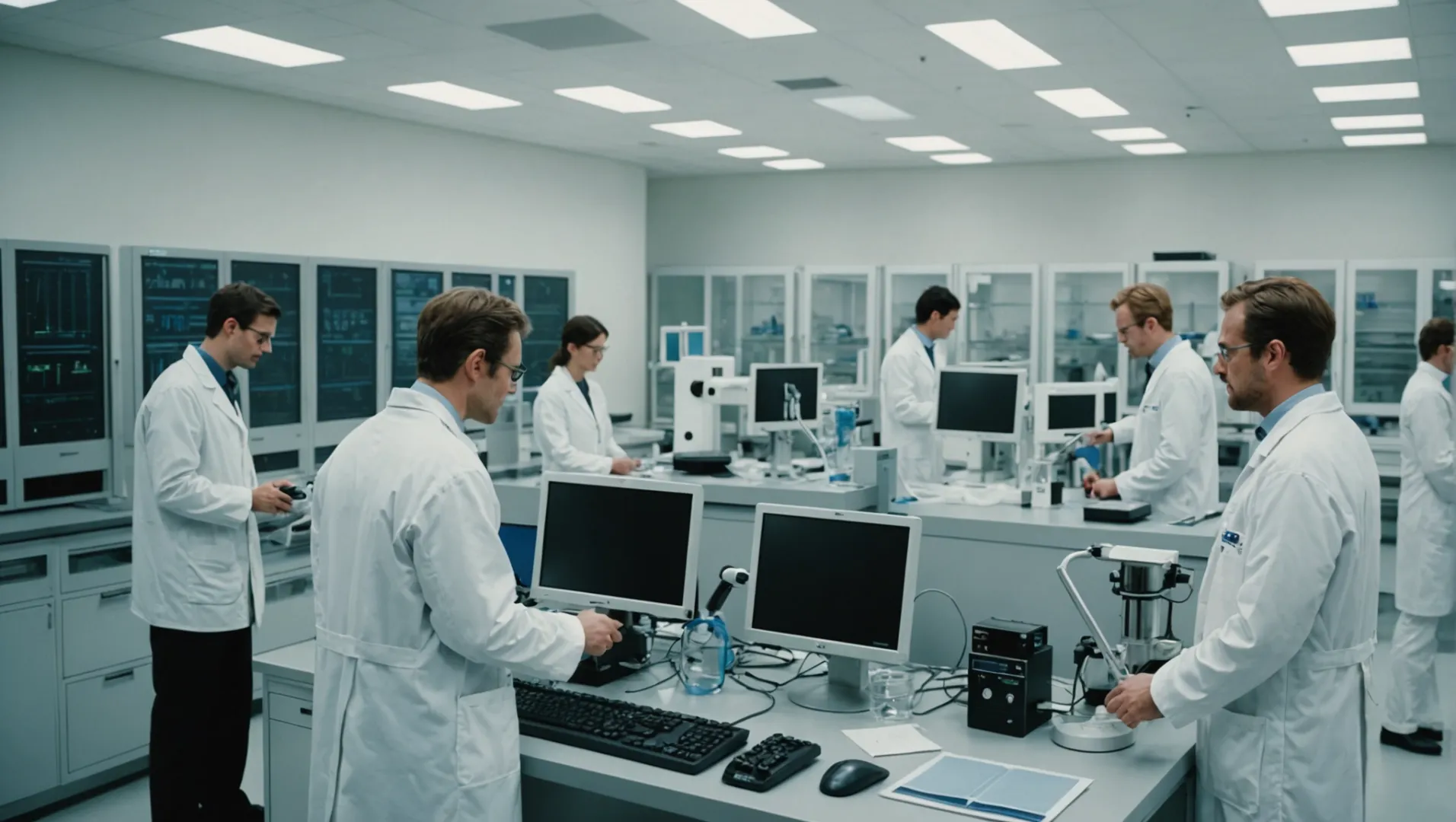
النماذج الأولية كأداة لتحليل التكاليف
إن تطوير جهاز لتنقية الهواء هو مسعى مكلف، حيث يمكن أن يؤثر كل قرار على الميزانية الإجمالية بشكل كبير. وباستخدام النماذج الأولية، يمكن للمطورين اختبار وتنقيح مقاييس الأداء الرئيسية2 مثل CADR (معدل توصيل الهواء النظيف) وتدفق الهواء ومستويات الضوضاء قبل الالتزام بأدوات الإنتاج المكلفة. يساعد الاختبار المبكر في تحديد المجالات التي يمكن فيها خفض التكاليف دون المساس بالجودة.
على سبيل المثال، إذا كشف نموذج أولي أن عنصر تصميم معين يؤدي إلى ضوضاء مفرطة، يمكن للمهندسين تجربة مواد بديلة أو تعديلات هيكلية لتحقيق الأداء المطلوب بتكلفة أقل. هذه الرؤى لا تقدر بثمن لإنشاء منتج نهائي أكثر فعالية من حيث التكلفة.
ملاحظات السوق وإدارة التكاليف
تلعب النماذج الأولية الوظيفية أيضًا دورًا حاسمًا في مرحلة التسويق الأولية من خلال جذب العملاء الأساسيين. وتساعد التغذية الراجعة المبكرة للسوق المطورين على اتخاذ قرارات مستنيرة بشأن الميزات التي يجب تحديد أولوياتها أو حذفها، وبالتالي تبسيط عملية تصميم المنتج وتطويره. يمكن لحلقة التغذية الراجعة هذه أن تقلل من الجولات اللاحقة من الاستثمار في الأدوات، والتي تعتبر مكلفة للغاية في تصنيع أجهزة تنقية الهواء.
ضع في اعتبارك سيناريو تشير فيه ملاحظات العملاء إلى أن ميزة معينة أقل أهمية. يمكن للمطورين عندئذٍ أن يقرروا تخصيص الموارد في مكان آخر، مما يؤدي إلى تحسين استراتيجية إدارة التكاليف.
| فوائد النموذج الأولي | الآثار المترتبة على التكلفة |
|---|---|
| اختبار الأداء المبكر | تقليل النفقات غير المتوقعة في الإنتاج |
| ملاحظات السوق | تحسين تحديد أولويات الميزات على النحو الأمثل |
| تقييم الموردين | ضمان كفاءة التكلفة على المدى الطويل |
تقييم الموردين من خلال النماذج الأولية
تُستخدم النماذج الأولية كمعيار لتقييم موثوقية المورد وقدرته على التطوير. إذا واجه المورد صعوبة في تقديم نموذج أولي يفي بمواصفات التصميم، فقد يشير ذلك إلى وجود مشاكل محتملة في عمليات الإنتاج المستقبلية. يعد اختيار المورد المناسب أمرًا بالغ الأهمية نظرًا لأن تبديل الموردين بعد عملية التجهيز يمكن أن يؤدي إلى تكبد تكاليف فرصة كبيرة.
من خلال تقييم قدرة المورد على إنتاج نموذج أولي وظيفي، يمكن للمطورين قياس مدى قابلية الموردين كشركاء على المدى الطويل. يساعد هذا التقييم على تخفيف المخاطر ويضمن قدرة المورد المختار على إدارة التكاليف بفعالية مع الحفاظ على الجودة.
تسريع الجداول الزمنية للتطوير
من المزايا الأقل شهرة للنماذج الأولية قدرتها على تسريع الجدول الزمني العام للتطوير، مما يؤثر بطبيعته على إدارة التكاليف. غالبًا ما يستخدم الموردون النماذج الأولية الوظيفية لاختبار عمليات مثل التصنيع باستخدام الحاسب الآلي التصنيع الآلي أو UL/ETL شهادة، مما يوفر عدة أسابيع في الجداول الزمنية لإطلاق المنتج.
من خلال تقصير هذه الجداول الزمنية، يمكن للشركات طرح المنتجات في السوق بشكل أسرع، مما يقلل من تكاليف الاحتفاظ بالمنتجات ويزيد من الإيرادات المحتملة من المبيعات المبكرة. على سبيل المثال، يمكن أن يؤدي تقليل وقت التطوير بمقدار 4-8 أسابيع إلى تحقيق وفورات كبيرة في التكاليف العامة وتوفير ميزة تنافسية في السوق.
تقلل النماذج الأولية من تكاليف إنتاج أجهزة تنقية الهواء.صحيح
تحدد النماذج الأولية فرص توفير التكاليف وتقليل المخاطر المالية.
يؤدي تخطي النماذج الأولية إلى تسريع عملية تطوير أجهزة تنقية الهواء.خطأ
تعمل النماذج الأولية على تسريع الجداول الزمنية من خلال تحسين التصميمات في وقت مبكر.
ما أهمية تقييم الموردين أثناء اختبار النموذج الأولي؟
يمكن أن يؤدي تقييم الموردين أثناء اختبار النموذج الأولي إلى نجاح منتجك أو فشله.
يضمن تقييم الموردين أثناء اختبار النموذج الأولي الموثوقية والقدرة وإدارة التكاليف، مما يضمن نجاح المشروع.
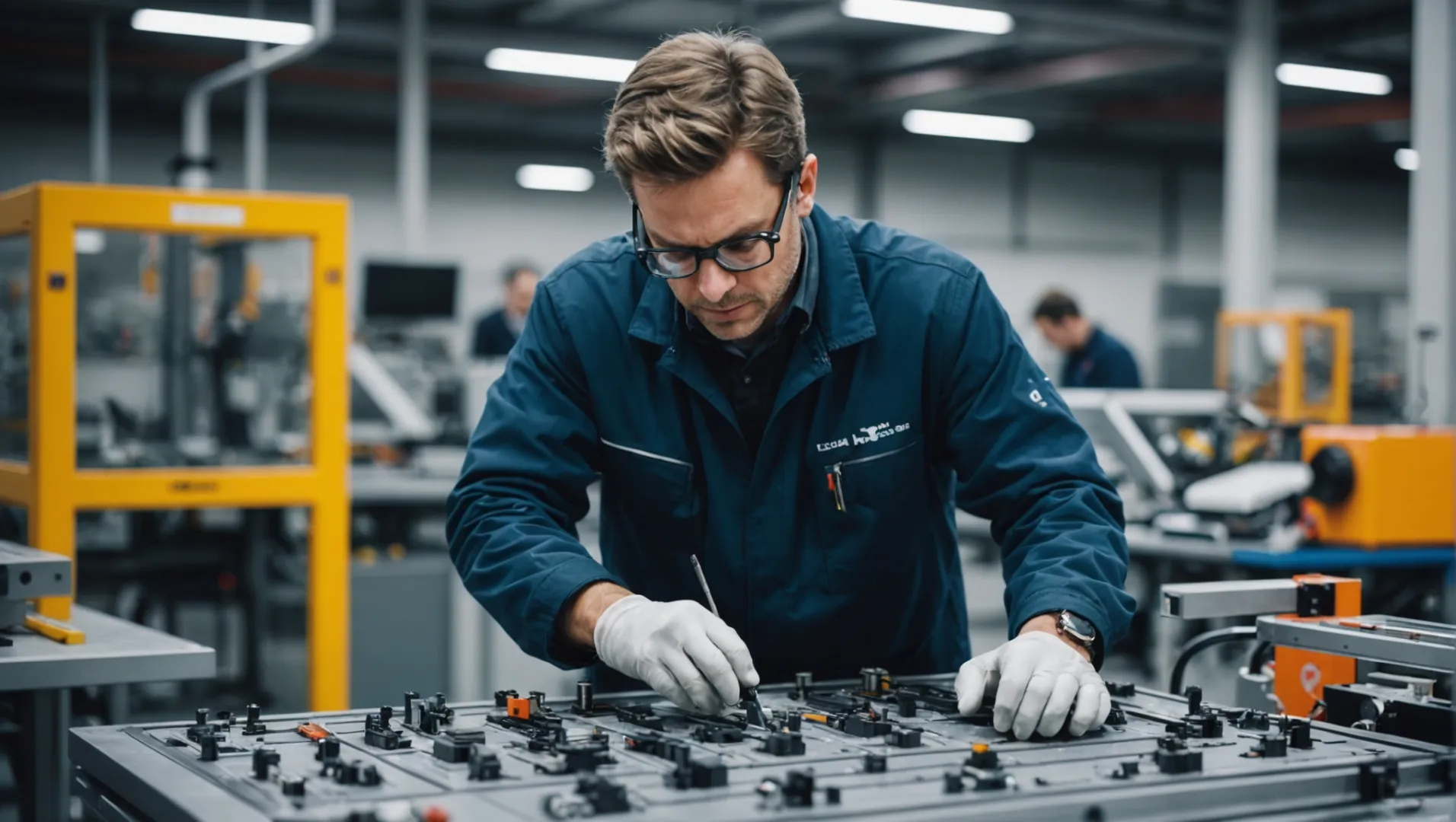
تقييم موثوقية الموردين وقدراتهم
عند تطوير نموذج أولي، يتم وضع موثوقية المورد وقدرته على المحك. A قدرة المورد3 للتعامل مع التصميمات المعقدة والمعقدة أمر بالغ الأهمية. إذا واجه أحد الموردين صعوبة في التعامل مع نموذج أولي صعب، فهذا يشير إلى وجود مشاكل محتملة في قدرته على دعم الإنتاج على نطاق واسع. يمكن أن يؤدي تبديل الموردين بعد تصنيع الأدوات إلى تكاليف فرص كبيرة وتأخيرات في المشروع.
أهمية تحليل التكاليف
تعتبر إدارة التكاليف جانباً أساسياً في أي مشروع جديد. أثناء اختبار النموذج الأولي، يقدم الموردون فاتورة المواد (BOM) وهو أمر بالغ الأهمية لتحديد سعر الوحدة. ويسمح هذا التحليل المبكر للتكاليف للشركات بإدارة تكاليف الموردين بفعالية، مما يضمن أن المنتج يلبي أهداف تسعير التجزئة ويظل قادراً على المنافسة في السوق.
| أسبكت | الاعتبارات |
|---|---|
| BOM الدقة | التأكد من تقديم المورد لقائمة المنتجات التفصيلية |
| سعر التجزئة المستهدف | محاذاة BOM التكاليف مع استراتيجيات تسعير التجزئة |
تسريع الجداول الزمنية للتطوير
يمكن للمورد المختص تسريع عملية التطوير من خلال إجراء اختبارات وظيفية وتوفير التصنيع باستخدام الحاسب الآلي نماذج أولية لشهادات مثل UL أو ETL. وهذا يمكن أن يقلل من الجدول الزمني بمقدار 4-8 أسابيع، مما يعطي ميزة تنافسية في الأسواق سريعة الوتيرة. وبالتالي، فإن اختيار مورد يمكنه دعم هذه العمليات بكفاءة أمر بالغ الأهمية للدخول السريع إلى السوق.
إمكانات الشراكة طويلة الأجل
لا يتعلق اختبار النموذج الأولي باحتياجات المشروع الفورية فحسب، بل يتعلق أيضًا بتقييم ما إذا كان المورد يمكن أن يكون شريكًا طويل الأجل. ويعكس الأداء المتسق والمرونة في التعامل مع التحديات غير المتوقعة والتواصل الشفاف خلال مراحل النموذج الأولي إمكانية المورد في التعاون طويل الأجل.
باختصار، يعد تقييم الموردين أثناء اختبار النماذج الأولية أمرًا محوريًا في ضمان سلاسة عملية تطوير المنتج وفعاليتها من حيث التكلفة وفي الوقت المناسب، مما يمهد الطريق للشراكات المستقبلية ونجاح السوق.
يؤدي تبديل الموردين بعد التجهيز إلى زيادة تكاليف الفرصة البديلة.صحيح
يمكن أن يؤدي تغيير الموردين بعد تجهيز الأدوات إلى تأخير المشاريع وتكبد تكاليف إضافية.
لا علاقة لدقة قائمة المواد الأولية باستراتيجيات تسعير التجزئة.خطأ
تُعدّ قوائم المشتريات الدقيقة ضرورية لمواءمة التكاليف مع أسعار التجزئة.
كيف يسرع اختبار النموذج الأولي من إطلاق سوق أجهزة تنقية الهواء؟
يعد اختبار النماذج الأولية أمرًا محوريًا في تقصير الوقت اللازم لتسويق أجهزة تنقية الهواء من خلال تحسين التصميم والوظيفة في وقت مبكر.
يعمل اختبار النموذج الأولي على تسريع عملية إطلاق أجهزة تنقية الهواء في السوق من خلال تحسين التصميم والتحقق من صحة الأداء وجمع الملاحظات المبكرة من السوق، مما يقلل من المراجعات التي تستغرق وقتًا طويلاً.
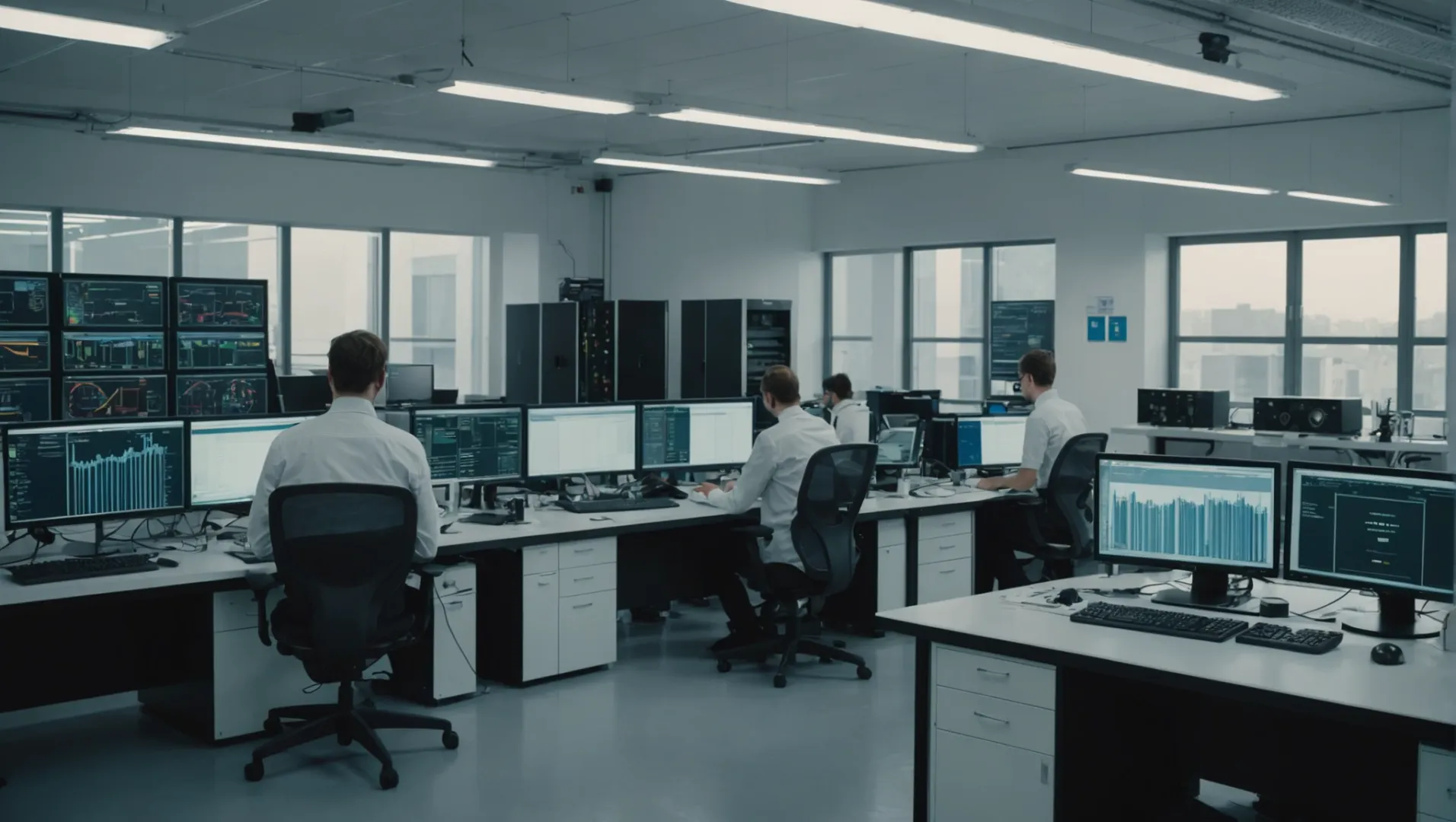
تحسين التصميم والوظائف
تتمثل إحدى الطرق الرئيسية التي تسرّع عملية اختبار النماذج الأولية في تسريع عملية إطلاق السوق من خلال تمكين الفرق من تحديد عيوب التصميم وحلها قبل الإنتاج على نطاق واسع. من خلال فحص مقاييس الأداء الحاسمة4 مثل معدل توصيل الهواء النظيف (CADR) وتدفق الهواء ومستويات الضوضاء، يمكن للمطورين إجراء التعديلات اللازمة في وقت مبكر من العملية. هذا النهج الاستباقي يمنع عمليات إعادة التصميم المكلفة في وقت لاحق.
الحصول على ملاحظات السوق المبكرة
تُعد النماذج الأولية الوظيفية بمثابة أداة قيّمة لجمع ردود الفعل الأولية في السوق. يمكن للشركات تقديم هذه النماذج الأولية للعملاء الأساسيين لتقييم ردود أفعالهم. لا تساعد هذه الاستراتيجية في فهم احتياجات المستهلكين فحسب، بل توفر أيضًا رؤى ضرورية لتحسين استراتيجيات التسويق.
تبسيط إدارة التكاليف
يسمح إنشاء نموذج أولي للمصنعين بتطوير قائمة المواد (BOM) وهو أمر بالغ الأهمية لتحليل التكلفة. تساعد هذه الخطوة في تحديد سعر تجزئة واقعي يتماشى مع أسعار المنافسين مع ضمان الربحية. بالإضافة إلى ذلك، من خلال استخدام نموذج أولي وظيفي5، يمكن للشركات اتخاذ قرارات مستنيرة بشأن استثمارات الأدوات، والتي عادةً ما تكون مرتفعة بالنسبة لأجهزة تنقية الهواء.
تقييم موثوقية الموردين
يمكن أن يكون اختبار النموذج الأولي مفيدًا في تقييم قدرات الموردين المحتملين. فإذا واجه أحد الموردين صعوبة في تقديم نموذج أولي عالي الجودة، فقد يشير ذلك إلى وجود مشاكل محتملة في الإنتاج الضخم، مما يدفع الشركات إلى إعادة النظر في خيارات الموردين. تخفف عملية التقييم هذه من المخاطر المرتبطة بموثوقية الموردين.
تسريع عمليات الاعتماد
يمكن استخدام النماذج الأولية لاختبار الاعتماد الأولي، مثل UL أو ETL الاختبار، مما يساعد في تحديد مشاكل الامتثال في وقت مبكر. يمكن أن توفر هذه الممارسة أسابيع في الجدول الزمني الإجمالي للتطوير، مما يضمن إطلاق أسرع في السوق.
ومن خلال الاستفادة من هذه الاستراتيجيات، فإن اختبار النماذج الأولية يختصر بشكل فعال المسار من المفهوم إلى إطلاق المنتج، مما يعزز القدرة التنافسية لأجهزة تنقية الهواء في السوق.
يقلل اختبار النموذج الأولي من تكاليف إعادة تصميم أجهزة تنقية الهواء.صحيح
التحديد المبكر لعيوب التصميم يحول دون إجراء مراجعات مكلفة في وقت لاحق.
لا يمكن استخدام النماذج الأولية لأجهزة تنقية الهواء في اختبارات الاعتماد.خطأ
تُستخدم النماذج الأولية لاختبار الاعتماد الأولي لتوفير الوقت.
الخاتمة
لا غنى عن النماذج الأولية لضمان نجاح أجهزة تنقية الهواء من خلال تحسين التصميم والوظائف، والمساعدة في دخول السوق، وتحسين التكاليف. تبنَّ النماذج الأولية للارتقاء باستراتيجية تطوير منتجك وتأمين ميزة تنافسية.
-
افهم كيف تؤثر قائمة المواد على كفاءة التكلفة في تصميم المنتج...: فاتورة المواد هي قائمة شاملة بالمواد الخام والمكونات والتعليمات المطلوبة لبناء أو تصنيع أو إصلاح منتج أو خدمة ما. ↩
-
تعرّف على المقاييس الأساسية التي توجه قرارات تصميم أجهزة تنقية الهواء..: يتيح نموذجنا الأولي إمكانية عرض جودة الهواء بالإضافة إلى مؤشرات الأداء الرئيسية ذات الصلة (KPIs) في شكل معالج. مع مؤشرات الأداء الرئيسية الصحيحة ... ↩
-
تعرّف على كيفية تقييم قدرات المورد الخاص بك بفعالية: انتبه جيدًا للجودة والقدرات والمخاطر والتكاليف والتسعير، وهي العوامل الخمسة الرئيسية التي يجب مراعاتها في تقييم الموردين للموردين الجدد أو الحاليين. ↩
-
اكتشف المقاييس الأساسية لتقييم النموذج الأولي...: تعتمد فعالية جهاز تنقية الهواء على ثلاثة مؤشرات أداء رئيسية: كفاءة الفلتر ومعدل تدفق الهواء ونمط تدفق الهواء. ↩
-
تعرّف على سبب أهمية النماذج الأولية الوظيفية للإنتاج الفعال من حيث التكلفة..: يمكن أن تساعد النماذج الأولية الوظيفية في تحديد المخاطر والتخفيف من حدتها في وقت مبكر من عملية التطوير، مما يقلل من احتمالية حدوث أخطاء مكلفة أو ... ↩




